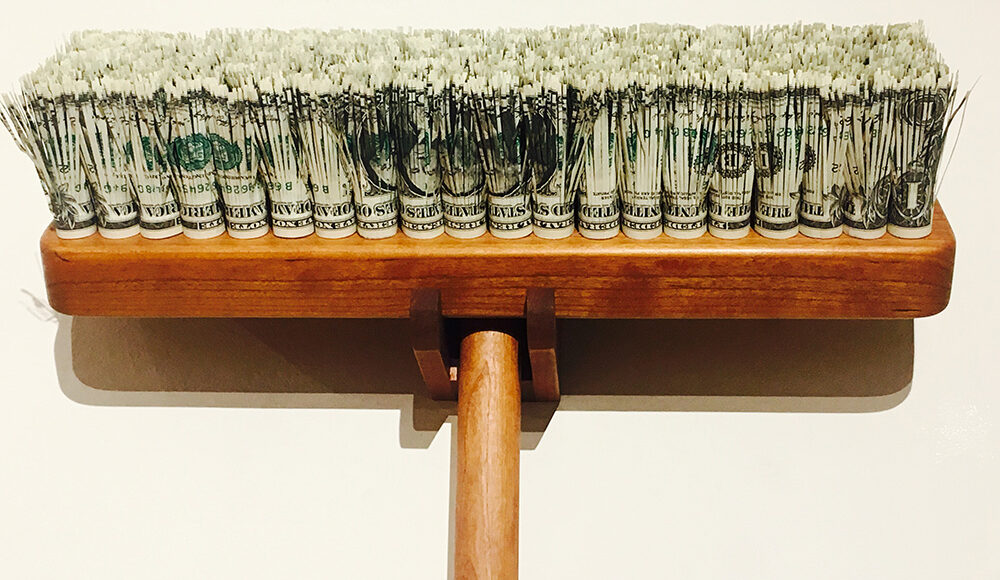By Layla Hussein, Taina Figueroa and Rodolfo Baez
“Mediums of Exchange” is a collection of art created on the theme of currency and many of the pieces are made with paper money and coins. More than 30 contemporary artists contribute to two exhibits, one at the Lehman College Art Gallery and the other at the Shirley Fiterman Art Center. The works explore different aspects of currency in culture.
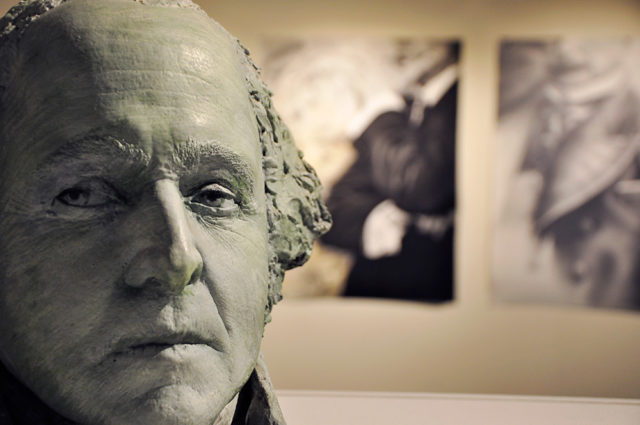
One-Dollar-Bill-George Washington by Tom Pfannerstill. Using acrylic on hydrocal, Pfannerstill started with a structure of his own head. “Sometimes I want to disguise myself, and so the face is hidden behind a mask,” he says. “They begin to hint at the infinite possibilities of how self is defined, what a person is or can be and how identities are established and reinforced.”
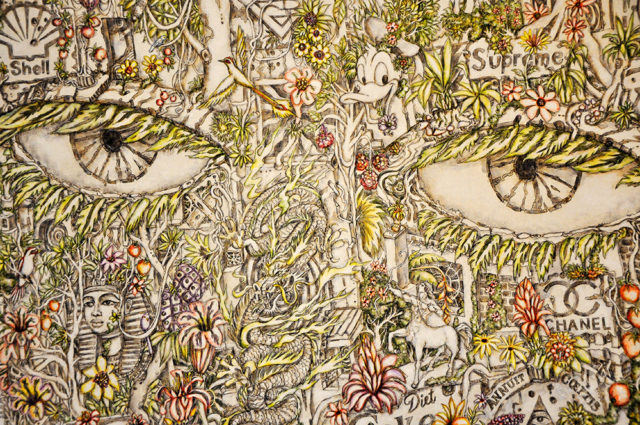
Portrait XI by Alexis Duque, 2018. Duque creates an oddly beautiful figure made entirely of logos, such as McDonalds, Coke, MasterCard, Kiss, and many more. All trademarks are carefully structured to create a picture of a human face. The only human characteristic are eyes, which Duque describes as the “eye of providence.”
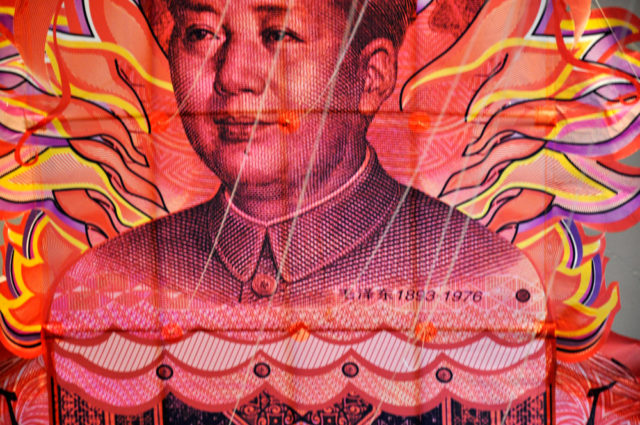
Currency Kite by Erika Harrsch. With this kite, Harrsch intends to portray the economic failures of Mao’s policies. In particular, Gulf illustrates the relationship between nature and the economy.
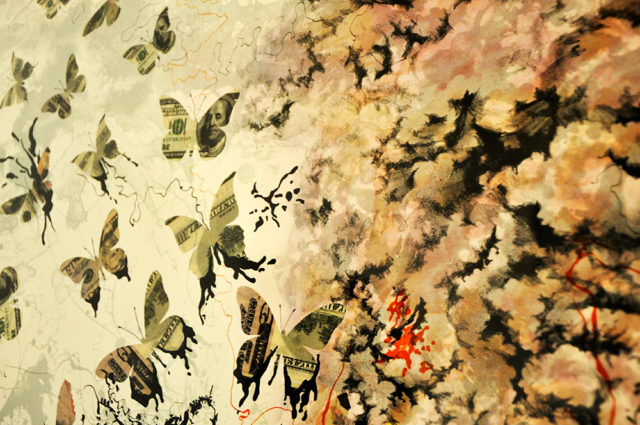
Gulf by Erika Harrsch, 2012. Here Harrsch depicts a large cloud of flames and dollar-like butterflies fleeing away. This can leave numerous interpretations for the viewers, but one may be a theme of self-reliance. The dollar-like butterflies rushing away from the oil disaster symbolizes how money is not a solution to every conflict.
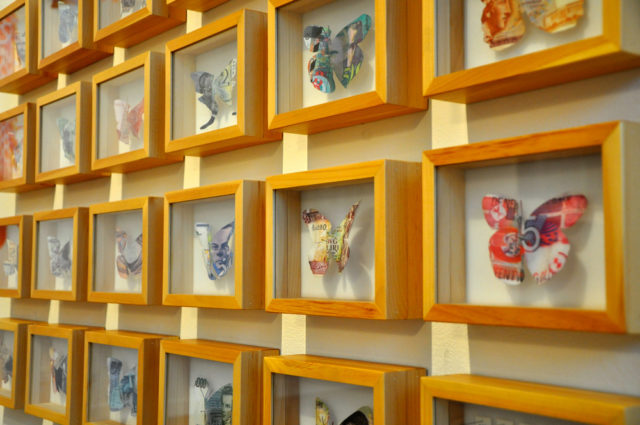
Papilionumismia Ephemerae Europeae by Erika Harrsch. Here Harrsch continues her economic message using 24 currencies represented as butterflies. Each exquisite butterfly has archival ink prints and is cut three dimensionally. In science, dead organisms are typically shown in specimen boxes. The use of dollar-like butterflies stored in these same boxes represents how economies can die just like organisms. Not every economic power of the government will be permanent, says Harrsch, who describes them as “going extinct.”
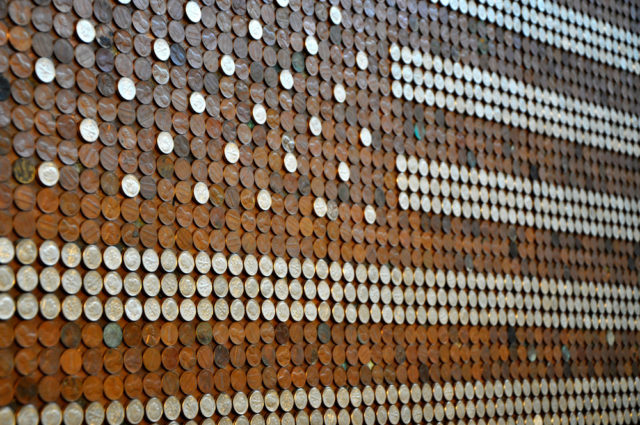
Change by John Salvet, 2008. This flag, entirely composed of pennies and dimes, presents a symbolic view of what truly defines America in silver and copper. “The composition, made entirely of currency, makes us wonder, what is America really made of? What do we value? What do we hold dear?” says Salvet.
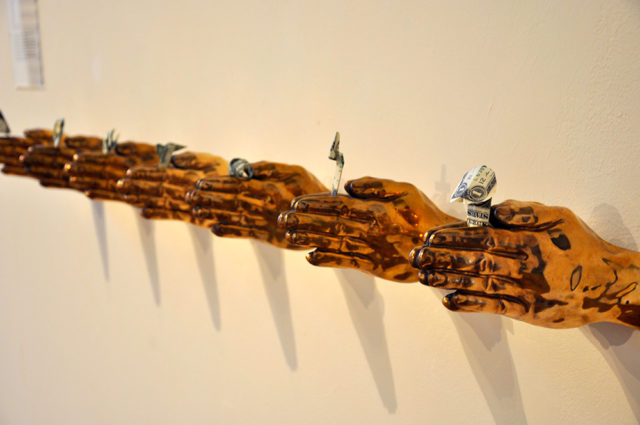
“In God we trust, everyone else pays” by Eugenio Merino, 2015. Bronze and dollar bills pray with origami-shaped dollar offerings, each representing a different object. The first left hand is a shaped as a pyramid, after that there are a heart, angel, eagle, infinity sign, a cross and finally a skull shape.
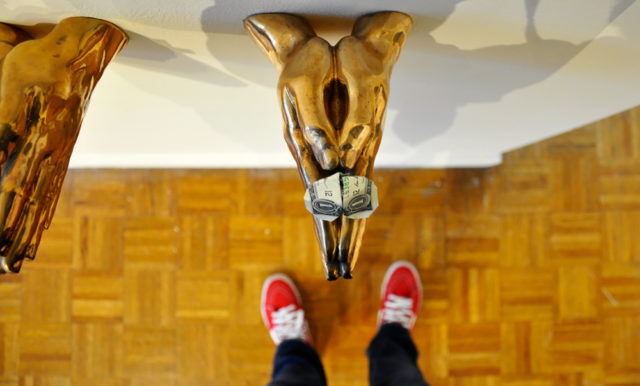
The artwork implies that worshiping money can ruin certain aspects of life. “Richness in the world is a result of other people’s poverty,” says Merino.
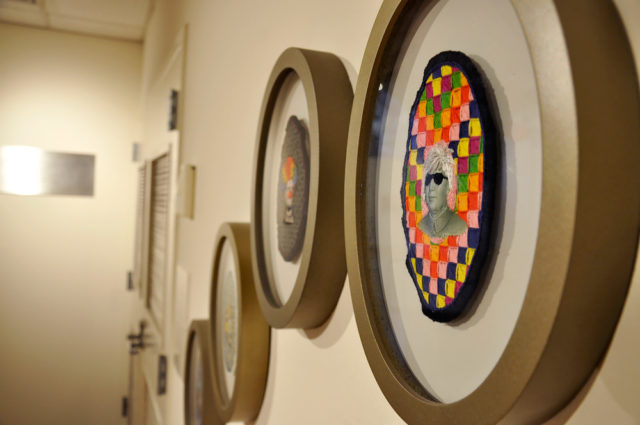
The Costume Party by Stacy Lee Webber, 2018. Portraits on currency are usually unsmiling and serious. Accumulating wealth is no joking matter. Webber’s art turns monotone currency colorful and wacky. Lincoln rocks a clown wig and Benjamin Franklin goes full grandma’s drag. The colorful additions are embroidered directly onto the bills, transforming a gallery of revered men into flip hipsters and jokers, thus suggesting the real worth of the bills.
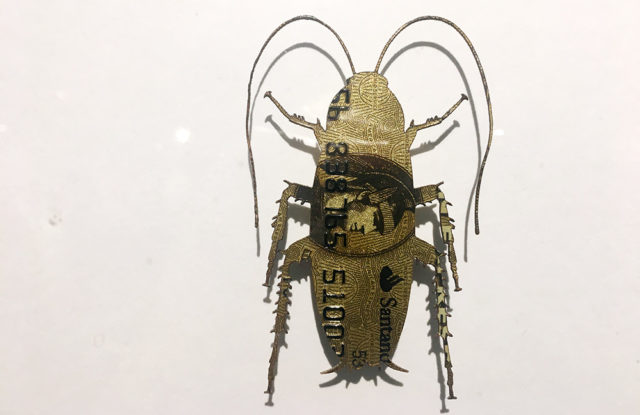
La Metamorfosis by Eugenio Merino, 2013. With this laser-cut card, Merino relates cockroaches to credit and references Franz Kafka’s The Metamorphosis where a salesman wakes up to discover he is now a bug. Merino’s metaphor implies that money-lenders, aka banks, are corrupt and akin to the creepy insect pest.
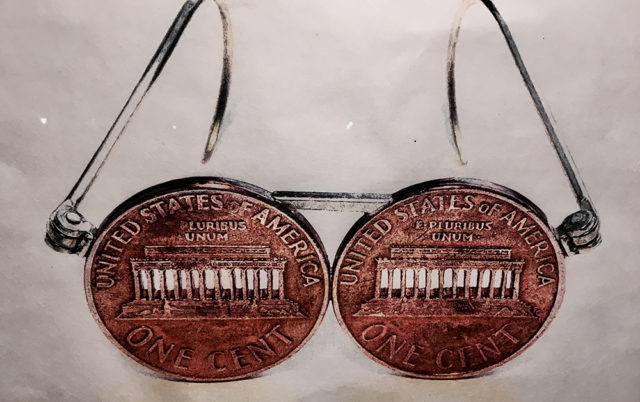
Coin glasses on work bench by Micah Adams, 2017. The artist says he is fascinated by “the mint’s graphic decisions, quirks and all.” He uses a simple ball point pen to create this detailed drawing of penny spectacles.
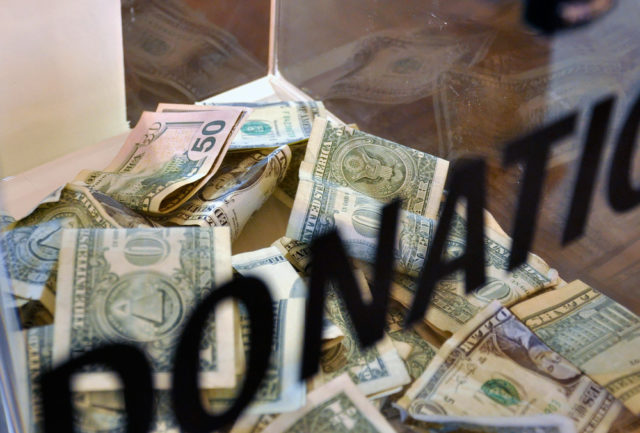
Speaking of cash. A $50 in a sea of $1’s.



